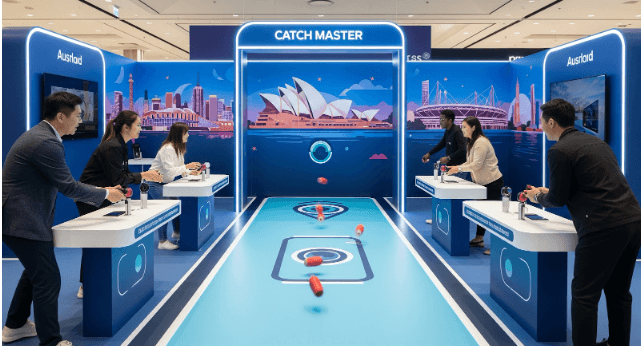How AR Try-On Technology is Expanding to Beauty, Eyewear, and Accessories?
Sep 1, 2025
In the fast-evolving world of retail, Augmented Reality (AR) Virtual Try-On has emerged as a transformative technology that is reshaping the way consumers shop and interact with brands. From trying on clothes and accessories to testing out cosmetics or even furniture, AR Virtual Try-On offers an immersive, convenient, and highly personalized experience.
What is AR Virtual Try-On?
AR Virtual Try-On uses augmented reality to allow users to preview products digitally in real time. Instead of physically visiting a store, customers can use their smartphones, tablets, or in-store kiosks to see how a product looks on them or in their environment. This not only improves convenience but also reduces the uncertainty that often comes with online shopping.
For example, customers can visualize how a pair of sunglasses fits their face shape, try out different shades of lipstick, or see how a sofa looks in their living room. This creates confidence in purchasing decisions and reduces product returns, which is a major challenge for e-commerce retailers.
The Hardware Behind AR Try-On
The success of AR Virtual Try-On depends on the right combination of hardware. Some of the key components include:
Smartphones & Tablets
Modern mobile devices are the most widely used hardware for AR try-on. With advanced front-facing cameras, depth sensors, and high-performance processors, they enable real-time rendering of products.
Apple’s iPhones with LiDAR sensors and Android devices with ARCore support are prime examples that make AR experiences smooth and accurate.
Smart Mirrors & Kiosks
Many physical stores are now installing AR-enabled smart mirrors or kiosks. These are large digital screens equipped with cameras and AR software, allowing customers to virtually try on clothes, accessories, or makeup without physically touching the products.
This touchless shopping experience is particularly valuable in the post-pandemic era, where hygiene and convenience are top priorities.
AR/VR Headsets
Devices like Microsoft HoloLens or Meta Quest can provide an even more immersive AR try-on experience. While not yet mainstream for retail, they are being explored for luxury shopping and premium in-store experiences.
High-Resolution Cameras & Depth Sensors
Accurate AR depends on precise tracking of a user’s face, body, or environment. Hardware such as depth sensors, LiDAR, and high-resolution cameras enable the software to capture exact dimensions and movements.
The Technology Powering AR Try-On
Behind the sleek user experience lies a combination of powerful technologies:
Computer Vision
Computer vision algorithms analyze the user’s face, body, or environment in real time. They detect landmarks such as eyes, nose, mouth, or hand movements to ensure that virtual objects (like glasses or rings) are aligned perfectly.
3D Modeling & Rendering
Products are converted into 3D models using CAD software or 3D scanning. These models are optimized to render in real time on consumer devices, giving users a lifelike view of products from multiple angles.
Augmented Reality SDKs
Platforms like ARKit (Apple) and ARCore (Google) provide developers with the tools to integrate AR capabilities into apps. These SDKs handle tracking, motion sensing, and environmental understanding to ensure stable AR experiences.
Artificial Intelligence (AI)
AI enhances AR try-on by enabling features like personalized recommendations, skin tone detection, and size suggestions. For example, AI can analyze a person’s body measurements to recommend clothing sizes or identify the most suitable makeup shade.
Cloud Computing & Edge Processing
Rendering AR content in real time can be computationally intensive. Cloud servers and edge computing help deliver high-quality AR experiences without overloading the user’s device. This is especially important for web-based AR try-on experiences, which don’t require app downloads.
Benefits for Retailers and Consumers
Increased Engagement: Shoppers spend more time exploring products interactively.
Reduced Returns: By visualizing products beforehand, customers make more confident purchases.
Personalized Experience: AI-powered AR can recommend products tailored to each user.
Omnichannel Integration: Works both online and in physical stores through apps, kiosks, or smart mirrors.
The Future of AR Try-On
AR Virtual Try-On is set to become a standard in retail. With 5G connectivity, more powerful devices, and advances in AI, the technology will become even more seamless and lifelike. We can expect greater adoption in fashion, beauty, eyewear, furniture, and even automotive industries.
For retailers, investing in AR Virtual Try-On is no longer just an innovation—it’s a necessity to stay competitive in the digital-first world.







